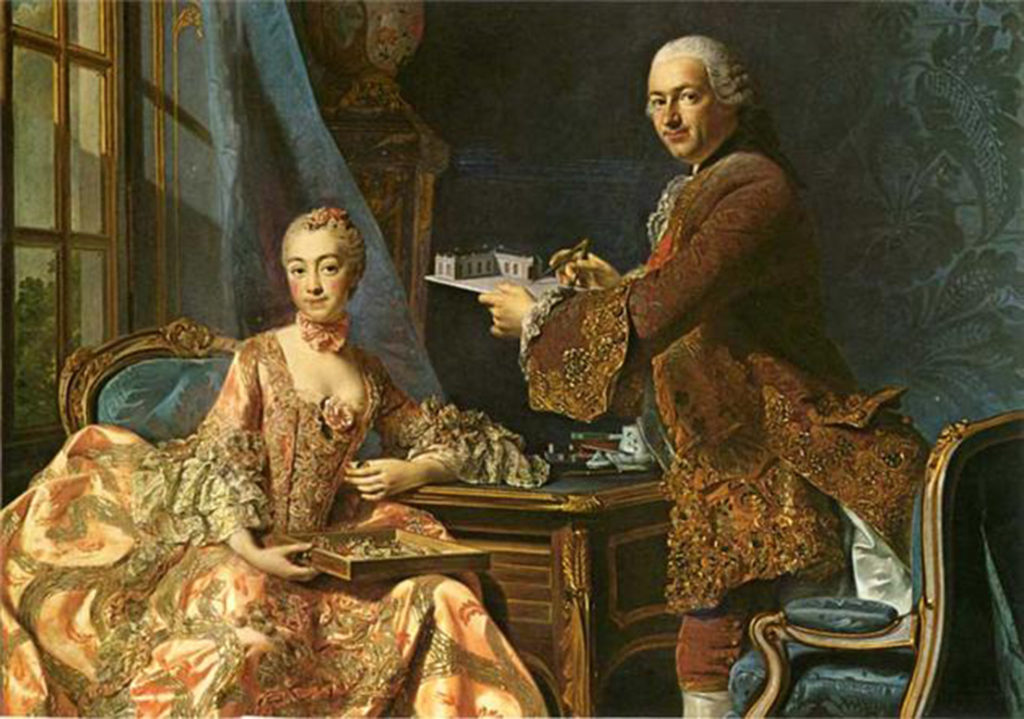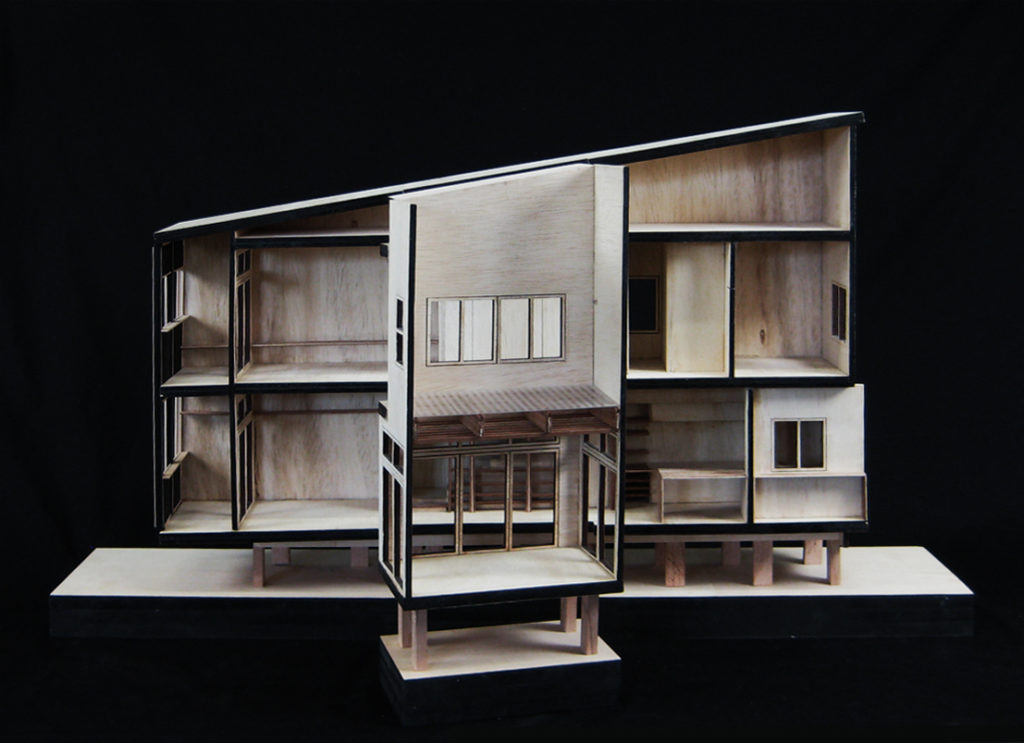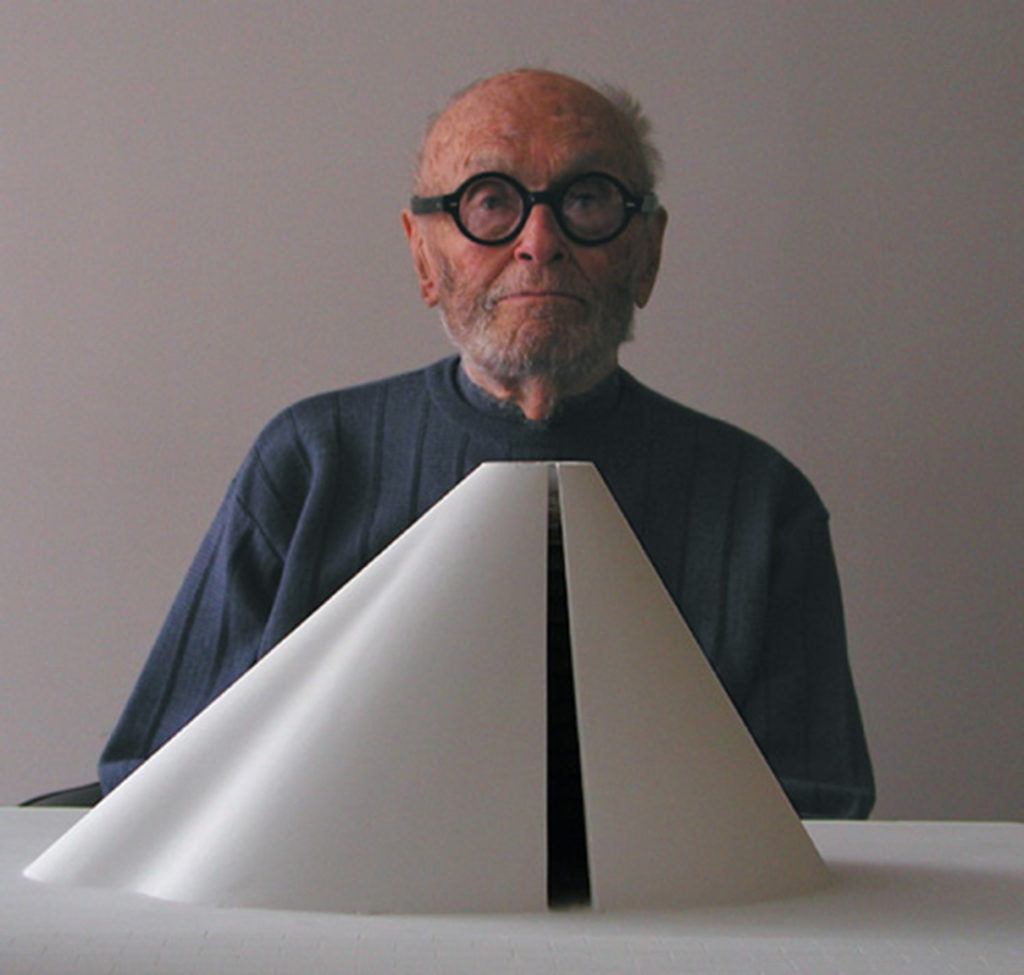Models, or The Thrill of it All
Mapos Designer

18th Century French Architect Jean Rodolph Perronet with his wife and a model. Photo: Wikimedia Commons
Architects are model makers. Architectural drawings are instructions with which contractors create full scale, functional models, i.e., buildings. I love building models not only because the act itself is delicious, but because models are architecture – (1) the early process, (2) the engagement, and (3) the wonder.
Models are Process
While architecture is represented in two dimensions in architectural drawings, by consequence of its nature as occupied spaces, architecture is inevitably conceived in three dimensions. Modeling early in the design process mirrors this logic. These early models are (and should be) rough, quick, gestural, nimble, and, most of all, reflexive. These early models in fact capture the architect’s training in action – the reflexive contemplation and manipulation of form and space. And, despite their rough nature, these early models are things of beauty. Far from precious objects, they are bold and unencumbered by realism.

Ideograms – Models that illustrate a general idea about a program, space, building, or site
Models Engage Us
Building models is immersive, both for the model builder and the audience. The model builder cannot help but consider every face, edge and line of a structure for she is, with her own hands, modeling it. The moments before a cut is made or glue is applied, the model builder considers its place, its consequence, its import. These considerations are reflexive and active, ultimately teaching the model builder about the architecture.
And for the viewer, the model is eye-opening. Besides the obvious (models are seriously fun to hold, look into, and, frankly, play with), models function to relay design observations and priorities to the audience. Save museum models that replicate every material and detail of a structure, most models are purposefully distilled reductions. The model thus opens and focuses both the model builder’s and the viewer’s eyes.

Iterations – Models showing the development of a house form

Presentation model – Full Building Section
Models Allow Us to Wonder
A model is itself potential, gleefully void of the minutiae of other forms of representation. This potential carries the mind and allows the viewer to wonder, unburdened by the fidgetry of exacting finish material and color. And so a model empowers its viewers, inviting them to partake, however momentarily, in the thrill of it all.

American architect Philip Johnson with a model, in 2002. Photo: Wikimedia commons, B. Pietro Filardo
“I hate vacations. If you can build buildings, why sit on the beach?” Architect Philip Johnson as quoted in Esquire: The Magazine for Men, Volume 100, 1983.